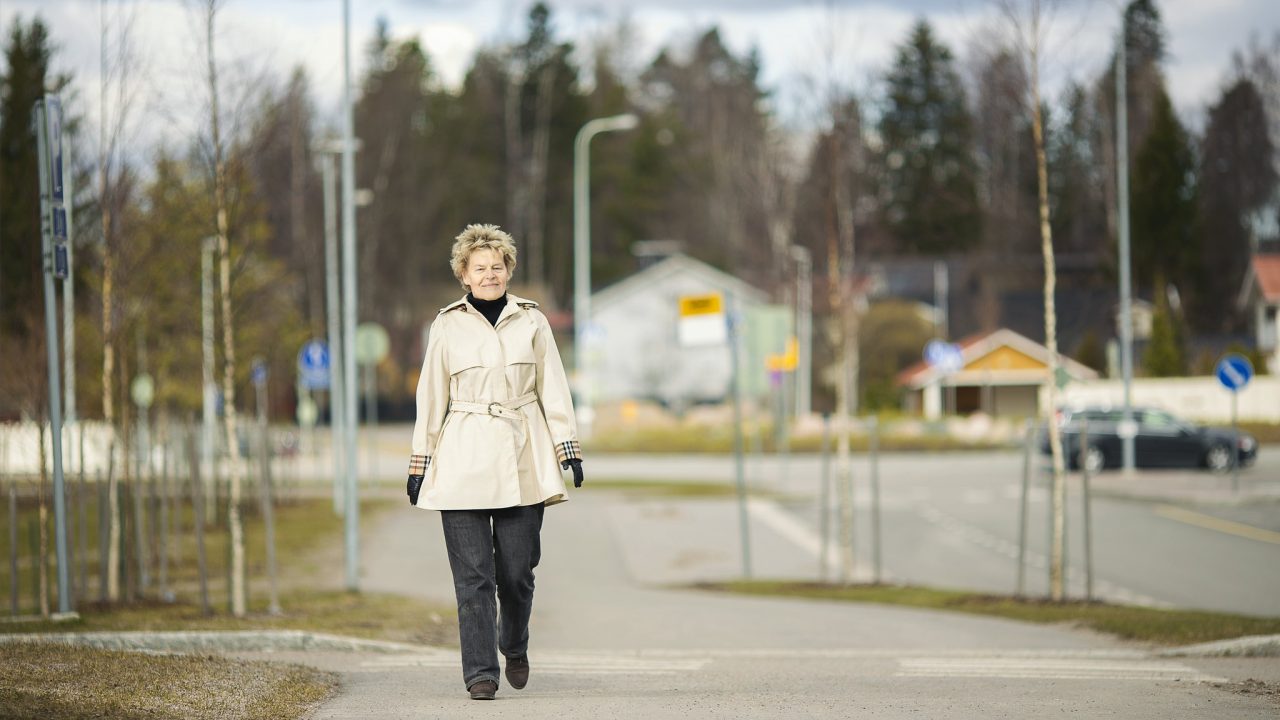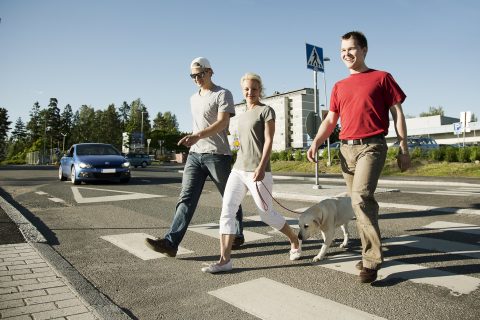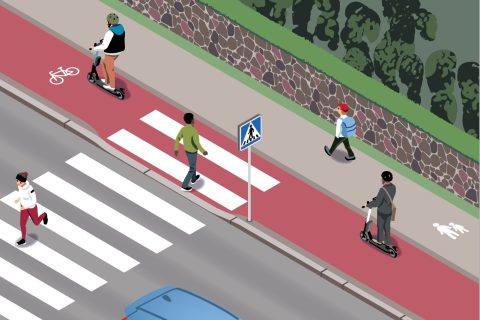
A safe road environment for older people
Road users’ own sense of safety is a good indicator of whether the environment is well designed and functional. A good environment feels safe and is a pleasure to move around in. As the population ages, achieving a safe and accessible road environment for all becomes an increasingly important challenge for local authorities.
A safe road environment attracts users
The environment influences the choice of transport. A well-functioning, high-quality environment facilitates walking and cycling for older people. Good roads and connections and a pleasant environment encourage people to get out and about.
A good environment feels pleasant and safe. Routes are clear of obstructions and well maintained in summer and winter. There are enough benches for taking little breaks. On safe roads, cyclists take slower movers into account and motorists do not speed across junctions creating hazards.
There are some who believe that older people are not capable of navigating traffic. We should also look at the matter from another perspective.
Does the road environment offer solutions that are suitable for older people and improve their safety? As Finland’s population ages, this perspective is increasingly important in traffic and transport planning.
There are various ways to improve the safety of pedestrians and cyclists.
- car traffic calming measures
- road narrowing and speed humps
- cycleways
- maintaining even and non-slippery surfaces
- providing rest points and benches along routes
- good road maintenance
- central islands to facilitate road crossing
- adjusting the duration of green lights to give older people more time to cross.
Hazard location surveys
In many municipalities, older people have themselves mapped out hazardous traffic spots. This activity is based on the idea that older people themselves are best placed to identify problems. Addressing problems identified by older people is one way of making transport safe and functional for older people and everyone.
Hazard location surveys provide local authorities with valuable information about the problems that older people experience in traffic. The surveys can be fed into local traffic safety and accessibility plans and policy programmes on ageing. The surveys can also be incorporated into action plans. These activities support the principle of the Local Government Act, which states that residents must have opportunities to participate in and influence local government (Local Government Act 2015/410, section 22).
The implementation of the survey is well suited for the tasks of local elderly citizens’ councils. Elderly citizens’ councils are local cooperation bodies for local officials, elderly citizens’ and pensioners’ organisations and others working with older people.
Issues identified in the surveys are reported to the relevant responsible parties locally. The responsible party can be, for example, technical services, maintenance services, the public transport department, and land owners. In this action model, the older citizens’ council is also responsible for monitoring how issues are addressed in practice.
Tools for implementing surveys
The Finnish Road Safety Council has developed materials for the implementation of local hazard location surveys. They consist of a brochure (Opens in a new window) (PDF) and a form (Opens in a new window) (PDF) (Currently in Finnish). They can be printed or requested from the Finnish Road Safety Council free of charge.





